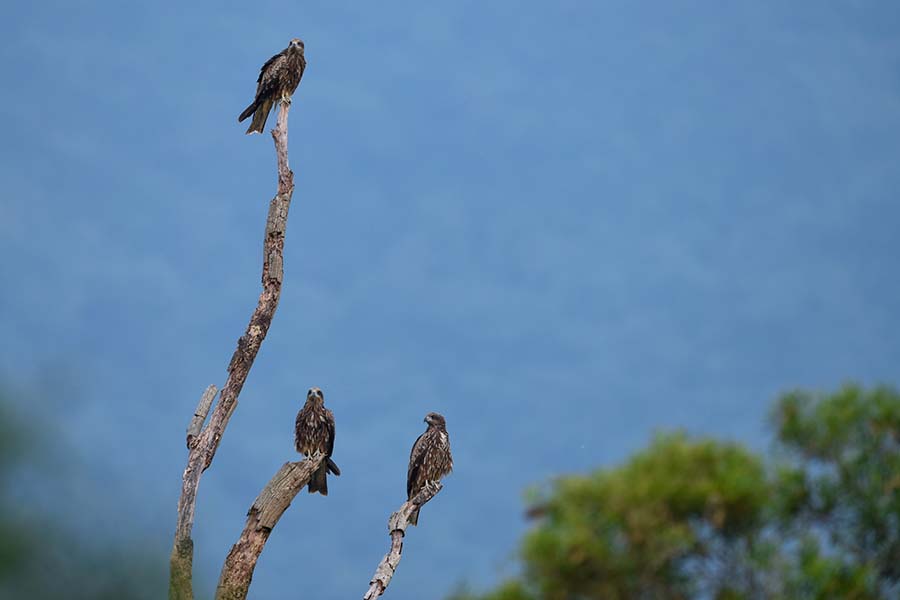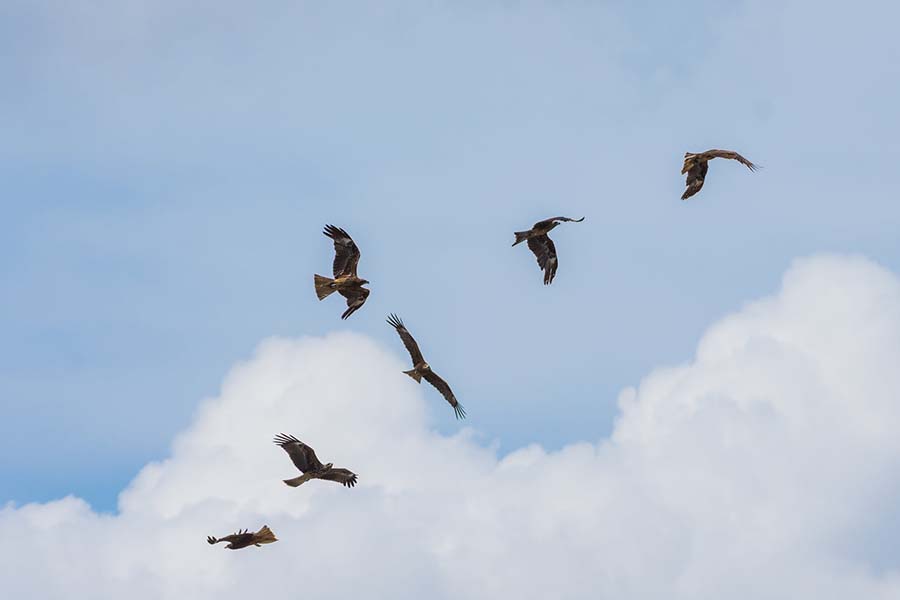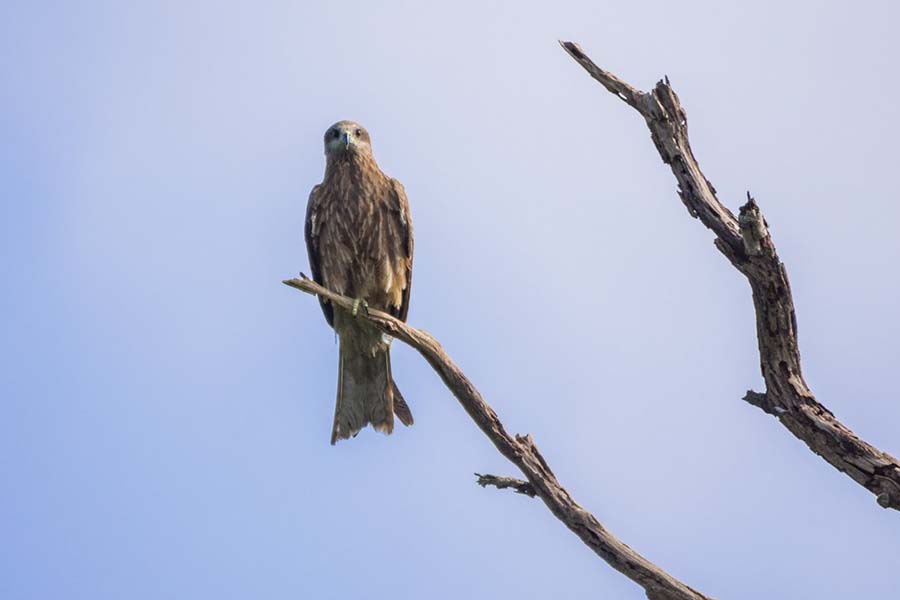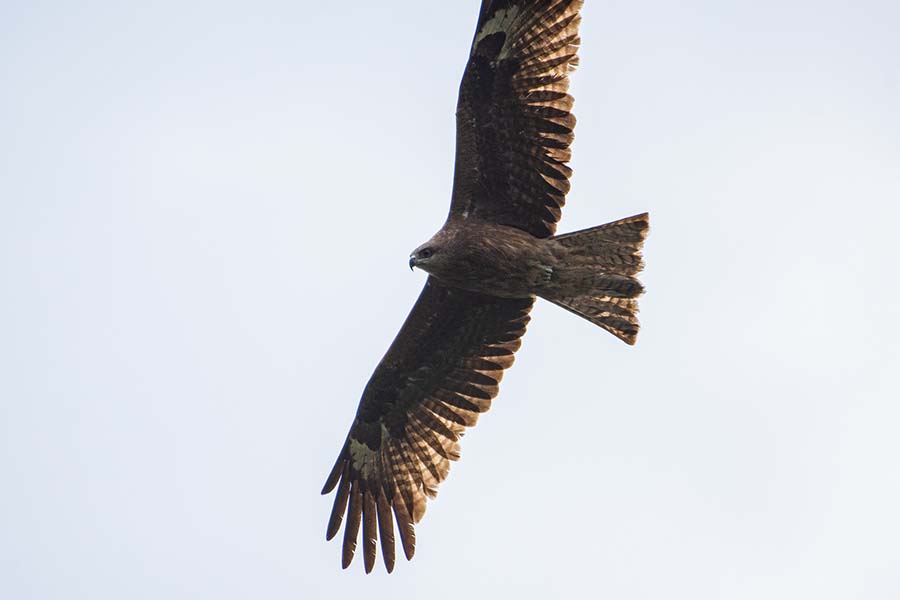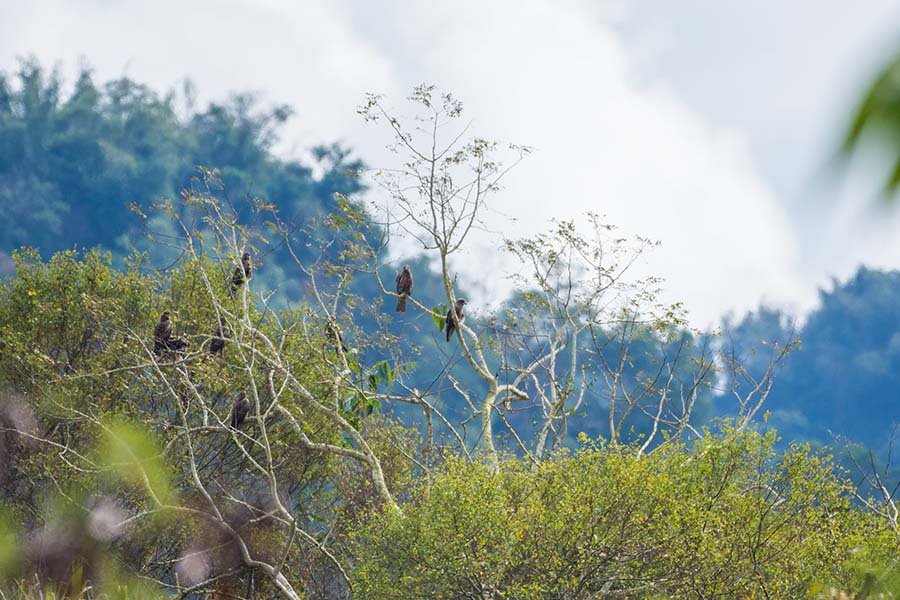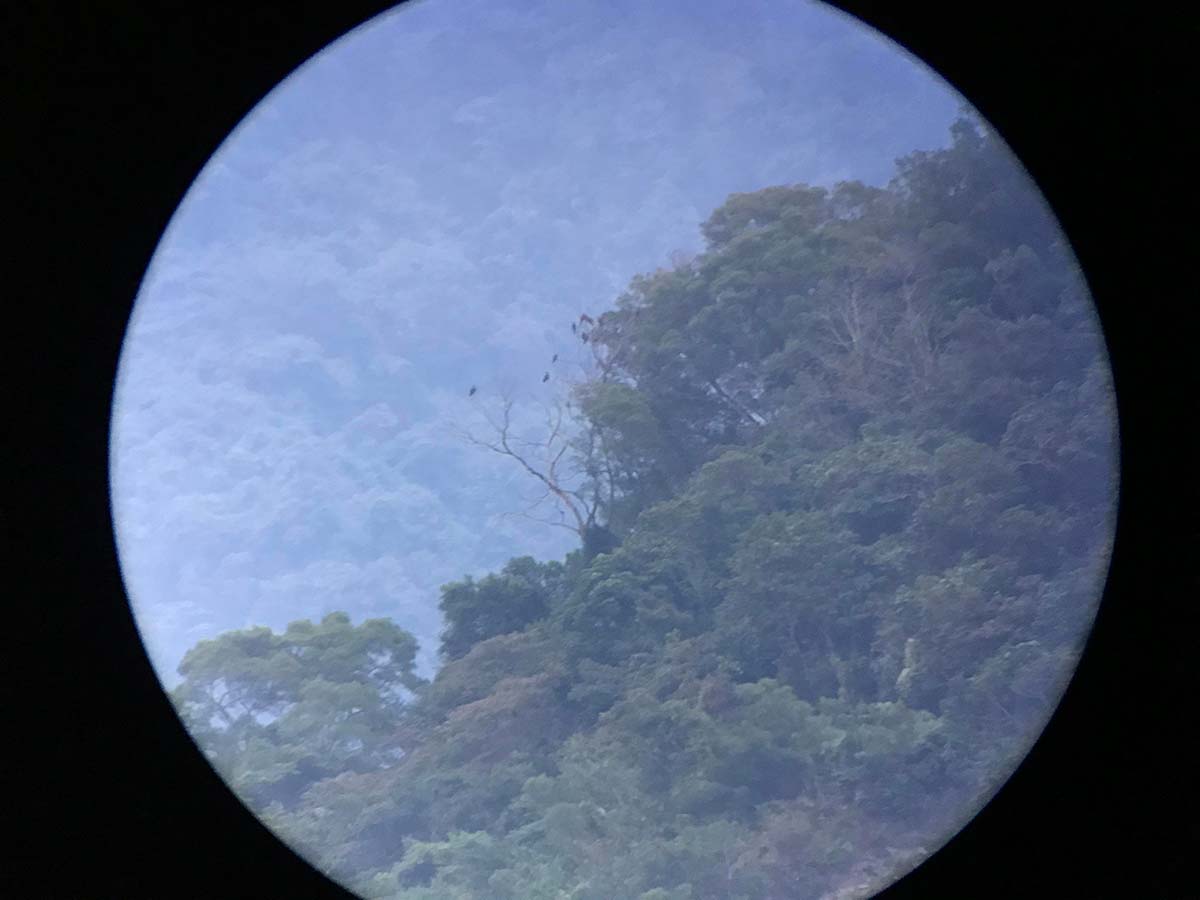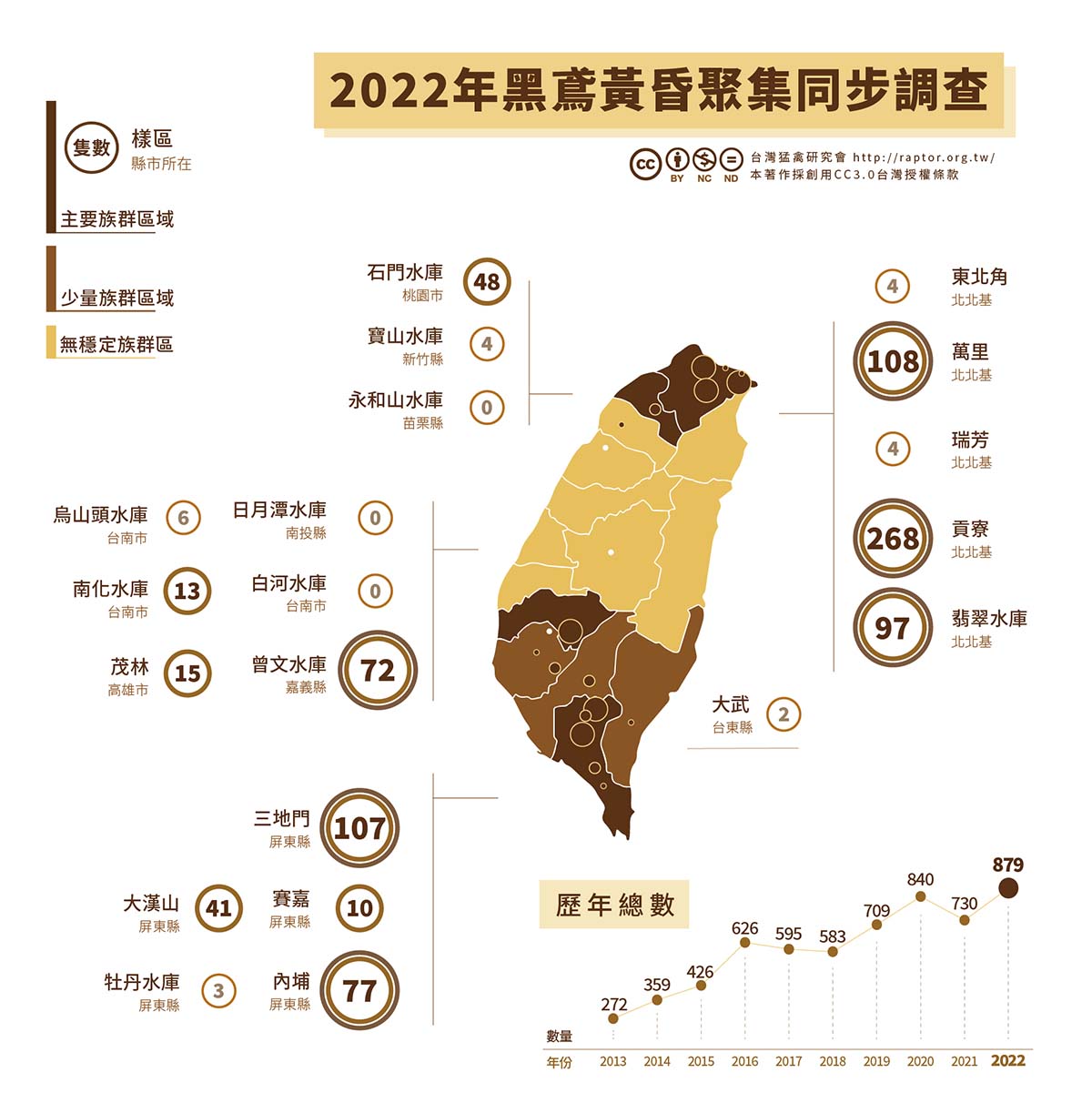A joint survey on raptor populations in Taiwan counted 879 black kites gathering at dust this winter. The results represent a new high since monitoring began in 1992. The survey was conducted by the National Pingtung University of Science and Technology (NPUST) Bird Ecology Lab, Chiayi University Habitat Ecology Research Office, the Raptor Research Group of Taiwan, and the Keelung Wild Bird Society. During an autumn survey conducted by the team, only 752 kites turned out; however, the winter tally recorded a new high since surveys began thirty years ago— 879!
As the number of black kites in Taiwan are increasing, they are beginning to spread out and claim new locations for their nocturnal habitats. In this year’s survey, Saichia, Pingtung was added to the list of locations in Southern Taiwan, while populations in the northeast corner of the island have reclaimed a stretch of sporadic nocturnal habitats once deserted. At present, the highest population density group is located the Gongliao area, where 268 kites have taken up residency. Using continuous satellite tracking, researchers are able to identify the birds’ new night-time habitats as populations increase.
In a previous study conducted by the Bird Ecology Lab at NPUST, satellite tracking was used to follow a single bird, named Eggplant. In the first ever study of its kind, the team confirmed that the Taiwanese black kites are indeed migratory. Consequently, it could be the case that some of the birds tallied in the recent survey have migrated to the island for the winter. Nevertheless, the researchers are confident that if Taiwan continues to improve its environment, survival rates of black kites—whether visiting for the winter or staying long term— will increase, and populations will continue to grow.

